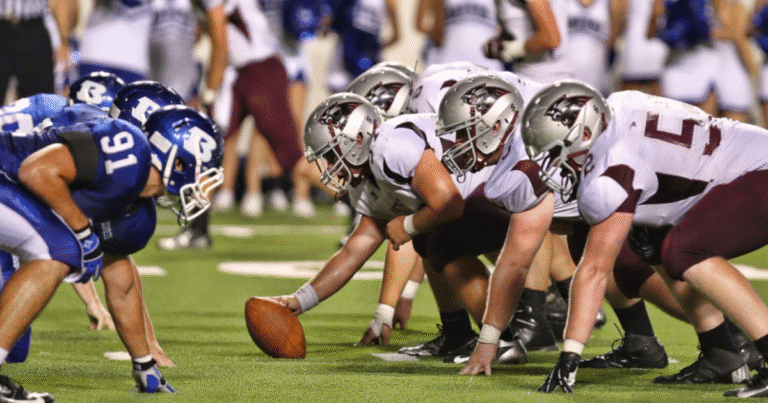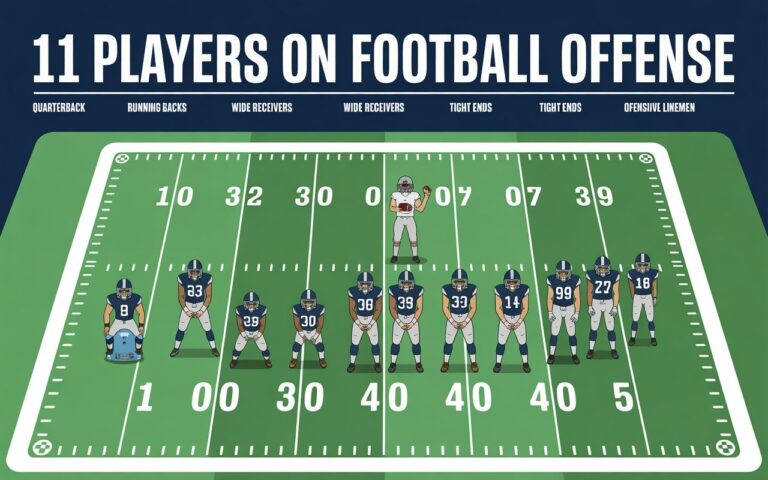How Long Is a Football Scrimmage?
Football scrimmages are a vital part of the game, giving teams the opportunity to sharpen their skills in a setting that mirrors a real match. But how long does a football scrimmage actually last, and what makes it different from a regular game? In this lively and easy-to-follow guide, we’ll uncover the duration, setup, and the latest 2025 rules shaping football scrimmages. Perfect for players, coaches, and fans, this article offers a fresh and clear perspective on football scrimmages. Let’s jump right in!
Understanding a Football Scrimmage
A football scrimmage is a practice session where teams mimic real game scenarios in a controlled environment. It’s less formal than an official game, allowing coaches to test plays, evaluate players, and build team synergy. Scrimmages are used across all levels of American football high school, college, and professional to prepare for the season. But how much time does a scrimmage take? Let’s break it down.
Duration of a Football Scrimmage
The length of a football scrimmage depends on factors like the level of play, the session’s goals, and coaching preferences. Unlike regular games with fixed quarters (15 minutes in the NFL or college), scrimmages are flexible. Here’s a look at typical durations:

- High School: Scrimmages usually run for 1 to 2 hours. Coaches may use short quarters (8–10 minutes) or focus on specific drills, with frequent pauses for teaching.
- College: These sessions often last 2 to 3 hours, blending full game simulations with targeted drills like goal-line stands or passing plays.
- NFL: Professional scrimmages are shorter, typically 1.5 to 2 hours, to prioritize player safety and limit physical strain during training camps.
What Influences Scrimmage Length?
Several elements determine how long a football scrimmage lasts:
- Objective: A scrimmage testing new strategies may be shorter than a full game simulation.
- Level of Play: High school teams keep sessions brief to build endurance, while college and NFL teams may extend them for tactical depth.
- Coaching Style: Some coaches stop play often to give feedback, lengthening the session.
- 2025 Regulations: New safety rules, like the NFL’s limit on contact time, cap scrimmages at 90 minutes of live action in many cases.
How a Football Scrimmage Is Organized
Scrimmages are carefully planned to maximize learning and performance. Here’s a step-by-step look at their structure:
1: Pre-Scrimmage Preparation
- Teams begin with a 10–15 minute warm-up, including stretches and light exercises.
- Coaches explain the scrimmage’s rules, such as no full tackling or specific play focuses.
- Players check their gear to ensure safety, especially at the high school level.
2: Focused Drills
- Scrimmages often include segments like offense vs. defense or special teams practice.
- Each segment lasts 10–20 minutes, with breaks for coaching tips or adjustments.
- Coaches may repeat plays to perfect techniques, like blocking or route running.
3: Simulated Game Play
- Teams play a condensed game, often with two halves or four short quarters (8–12 minutes).
- A running clock is common to keep the session moving.
- Some scrimmages skip elements like punts or kickoffs to focus on key areas.
4: Post-Scrimmage Wrap-Up
- A 10–15 minute cool-down follows, with stretches to prevent injuries.
- Coaches provide feedback, pointing out successes and areas to improve.
- Teams may review film or discuss plays to reinforce lessons learned.
2025 Rules Shaping Football Scrimmages
In 2025, new regulations are making scrimmages safer and more structured, especially in professional and college football. Key updates include:
- NFL Guidelines: The NFL now limits full-contact scrimmage time to 90 minutes per session, with a maximum of three sessions weekly during training camps to reduce injury risks.
- NCAA Restrictions: College teams are capped at two live-contact scrimmages per week in the preseason, each lasting no more than 2 hours.
- High School Protocols: Many states mandate pre-scrimmage safety briefings, including concussion awareness, adding 10–15 minutes to preparations.
These changes ensure scrimmages balance intensity with player well-being, requiring coaches to plan efficiently.
Scrimmage Duration by Football Level
Here’s a concise table showing typical football scrimmage lengths:

| Football Level | Duration | Key Features |
| High School | 1–2 hours | Short quarters, frequent coaching breaks |
| College | 2–3 hours | Mix of drills and game-like scenarios |
| NFL | 1.5–2 hours | Controlled contact, injury prevention |
Why Football Scrimmages Matter
Scrimmages are essential for team success. Here’s why they’re so valuable:
- Skill Building: Players practice techniques, like catching or tackling, in realistic settings.
- Team Bonding: Scrimmages foster trust and communication among teammates.
- Play Testing: Coaches try new strategies without the stakes of a real game.
- Performance Reviews: Scrimmages help identify starters and highlight weaknesses.
For instance, a running back might work on breaking tackles, while coaches assess how the defense responds. This practical approach makes scrimmages a game-changer.
How to Optimize a Football Scrimmage
To get the most out of a scrimmage, players and coaches can follow these tips:
- Define Objectives: Know what you’re working on, like improving pass protection or special teams.
- Prioritize Safety: Adhere to 2025 safety rules and wear proper equipment.
- Communicate Clearly: Players should share feedback with coaches during breaks.
- Use Video Analysis: Record the scrimmage to review plays and improve.
- Stay Hydrated: Take water breaks, especially during warm weather.
FAQs About Football Scrimmages
How long does a football scrimmage usually last?
A football scrimmage typically takes 1 to 3 hours, depending on the level. High school scrimmages last 1–2 hours, while college and NFL sessions may run 2–3 hours.
Can fans attend football scrimmages?
Some college and NFL scrimmages, especially during training camps, are open to the public. High school scrimmages are often private to maintain focus. Check with the team for details.
Are scrimmage rules the same as game rules?
Not exactly. Scrimmages often have adjusted rules, like no contact or shorter periods, to emphasize specific skills. Coaches set rules based on the session’s purpose.
How do 2025 rules affect scrimmages?
New 2025 rules limit contact time. For example, the NFL caps live-contact scrimmages at 90 minutes, and the NCAA allows only two per week for college teams.
Are injuries common in scrimmages?
Injuries are possible but less likely with 2025 safety rules, like reduced contact and mandatory gear checks. Proper supervision further lowers risks.
Conclusion
Football scrimmages are a vital tool for preparing teams for the season, blending practice with game-like intensity. While their duration—typically 1 to 3 hours—varies by level and purpose, their value lies in building skills, testing strategies, and fostering teamwork. With 2025’s updated safety rules, scrimmages are now safer and more focused, ensuring players stay ready without unnecessary risks. Whether you’re a player, coach, or fan, knowing how long a football scrimmage lasts and how it’s structured will enhance your appreciation of the sport. Get out there, plan smart, and make every scrimmage a step toward victory.







